Catching Up With Javier Morales on the International Congress of Juggling and Circus Arts
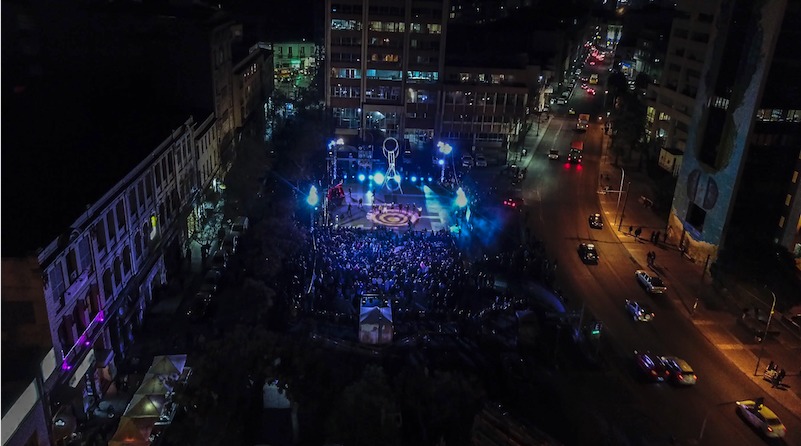
With the upcoming CIMAC (International Congress of Juggling and Circus Arts) this September, the juggling and circus world in Chile is bracing for an international infusion of creators even while it prepares to share the unique nature and spirit of Chilean circus and juggling. Even as far back as back as 2004, Chile’s contribution to the juggling world has been well-established and was recognized by The Washington Post with their article They Took Juggling Balls and Ran With Them.

One of the forces behind this major congress of juggling and circus is Javier Morales, circus artist himself (clown and juggling). Morales is the director of the circus company Malabicirco and also director of CIMAC. His company Malabicirco is the oldest contemporary circus company in Valparaíso, Chile, made up of 10 grassroots members who “love the circus, the performing arts, independence and freedom”. We spoke with Morales about the plans for CIMAC in 2021 and the types of adaptations they have made to assure the event not only survives but thrives during the pandemic.
Kim Campbell: What is CIMACs mission?
Javier Morales: To produce joy, amazement and knowledge around the circus for the Chilean family and artists from South America.
KC: When and how long will CIMAC be this year?
JM: CIMAC 2021 will be performed in September from Thursday the 2nd to Sunday the 12th. This year CIMAC will be in online format for a big percentage of the time. There will be fewer activities in person so there is no open call this year, but there will be more public acts like a wireman crossing two big buildings to surprise people in transit, and visiting some neighborhoods in Valparaíso with a circus truck.
KC: Can you tell us some confirmed performers at CIMAC? Will there be a headliner? Are there keynote speakers?
JM: This year we’re going to have a four-hour master class by Gandini Juggling. Craig Quat will be giving a fifteen-hour seminar about functional juggling and Bartolomé Silva who is the founder of Circo del Mundo Chile (Cirque du Monde) will be participating with an eight-hour seminar on staging for circus artists. In addition to this, there will be the Gala Show with the best Chilean circus artists.
KC: What edition is it of CIMAC ?
JM: This edition will be the 12th version–we started with the first in 2009. We had to stop in 2018 because of some strikes on the building where we celebrate CIMAC. There was an occupation by some people in that place.
KC: Javier, tell us about yourself and your circus background.
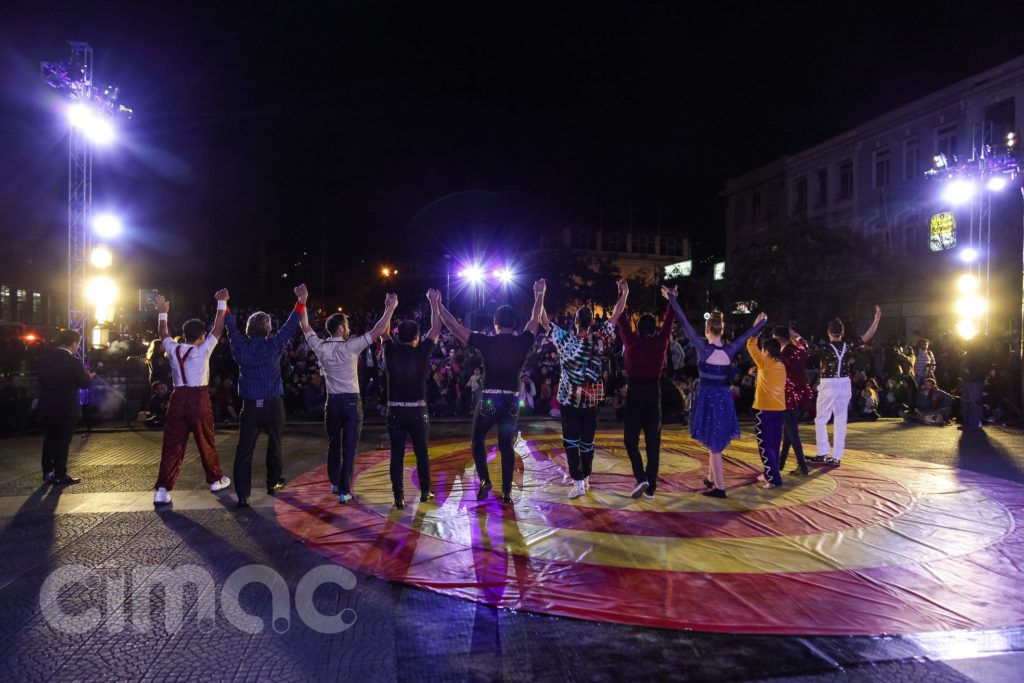 JM: I started to enjoy and train circus at the age of 16, first as a hobby. At the age of 18 I went to theUniversidad de Playa Ancha (UPLA) to study Translation and Interpretation English- Spanish. During the process of that career (five years) I started to take some workshops and seminars about circus and theatre in Chile and Argentina. My disciplines were in circus are juggling and clowning. Then in the process of teaching circus to children and teenagers, I decided to get a graduate degree in education. And in 2020 I planned to travel to Zaragoza, Spain, because I got a scholarship to study my master’s degree in live Shows, but because of the pandemic situation I have to study online. Now I have a master’s degree in live shows from San Jorge University. Since 2007 I’ve been the artistic director of Malabicirco Circus Company, the oldest circus company in Valparaíso City. I have written and directed nine creations. Since 2009, I have been the general director of CIMAC.
JM: I started to enjoy and train circus at the age of 16, first as a hobby. At the age of 18 I went to theUniversidad de Playa Ancha (UPLA) to study Translation and Interpretation English- Spanish. During the process of that career (five years) I started to take some workshops and seminars about circus and theatre in Chile and Argentina. My disciplines were in circus are juggling and clowning. Then in the process of teaching circus to children and teenagers, I decided to get a graduate degree in education. And in 2020 I planned to travel to Zaragoza, Spain, because I got a scholarship to study my master’s degree in live Shows, but because of the pandemic situation I have to study online. Now I have a master’s degree in live shows from San Jorge University. Since 2007 I’ve been the artistic director of Malabicirco Circus Company, the oldest circus company in Valparaíso City. I have written and directed nine creations. Since 2009, I have been the general director of CIMAC.
It is a big culture–you can see sport juggling, street juggling and stage juggling in Chile. We have really good jugglers in our country.
KC: How many people work on your team and are planning CIMAC as a year-round job?
JM: Sixteen people compose the principal CIMAC team (production, communication, audiovisual, and artistic areas). Then during the activities, for this year, it is almost 70 people including artists, technicians and others taking part in the event.
KC: Do you get support from the government and local businesses to organize the festival?
JM: Over the 12th years of the event we have gotten support from the government three times 2017, 2019 and 2021. In Chile, you have to apply for the financing and wait and pray a lot. Local businesses are not too involved with artistic events.
KC: How did you get the idea to produce this festival originally?
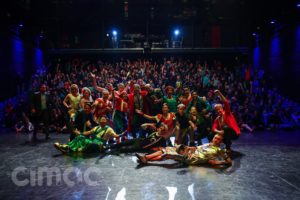 JM: This idea arose with the goal of celebrating World Juggling Day (in June). Then we modified the title of the event to CIMAC because of the characteristics of the activities (we added other circus disciplines) and we looked for other dates for the celebration, because in June it it rains a lot in Chile, and it is winter. From 2019 we started to celebrate it in August. During the process of the event (2009-2021) we looked for moments in circus to discuss disciplines, teaching, learning, showing and creating.
JM: This idea arose with the goal of celebrating World Juggling Day (in June). Then we modified the title of the event to CIMAC because of the characteristics of the activities (we added other circus disciplines) and we looked for other dates for the celebration, because in June it it rains a lot in Chile, and it is winter. From 2019 we started to celebrate it in August. During the process of the event (2009-2021) we looked for moments in circus to discuss disciplines, teaching, learning, showing and creating.
KC: How important is juggling in Chile?
JM: Juggling is the massive discipline of circus in Chile, partly because the most immediate circus discipline that you have for learning is juggling. It is a big culture–you can see sport juggling, street juggling and stage juggling in Chile. We have really good jugglers in our country.
KC: What types of shows will there be in this edition?
JM: The Gala event at CIMAC will be performed by artists of traditional and contemporary circus, from different disciplines like juggling, unicycles, ball balance, trapeze, acrobats and more.
Then we will present Eureka — a show created in collaboration with Malabicirco (contemporary circus) and Golden Circus (traditional circus). The world of classical clown routines has disappeared, replaced by the dramaturgy of the show.
We’re going to have two vehicles that will go to the different neighborhoods of the city. The first one is the truck of circus called Circo a tu Ventana (Circus to Your Window) and the second one is Comando RIE that is directed by Tuga, a well-known Chilean mime.
To the public, we will be presenting the performance of Crossing Lives. A man on wire will cross the wire from one building to another. At 20 meters tall this will be a test for this really risk circus act.
KC: Do you notice any circus trends emerging in Chile and do they affect the tone and content of your events?
JM: Contemporary and traditional are the trends that lead the circus process in Chile. We’re the unique event in Chile that invites these two lines of circus to participate in CIMAC, and the experience of having all together has been absolutely great, with just positive results.
The general impression is very good since the event has congress characteristics and has a high pedagogical approach, not only for circus artists but also for non-circus children and families.
KC: What types of workshops will there be this year and who are they for?
JM: We have three seminars for professional circus artists, Staging for Circus Artists (Bartolome Silva), Functional Juggling (Craig Quat) and Juggling and Movement (Gandini Juggling).
We have five workshops for people and families; Slapstick and Clown (Malabicirco), Magic (Samyr Dorado), Juggling (Alvaro Palominos), Bubbles (Dirck Pajares) and Puppets. Besides we’re going to have a first aid workshop for artists and the general audience.
KC: People come from around the world to attend–do they leave with a better understanding of the importance of circus in Chile?
JM: People from different countries come to participate in CIMAC activities. The general impression is very good since the event has congress characteristics and has a high pedagogical approach, not only for circus artists but also for non-circus children and families. Conversations, talks, and conferences are generated that also bring the circus closer to the academic world. In this way, the topics covered are very varied and of general interest. Foreign artists are surprised with the level of production of the event, and obviously, this cross between traditional and contemporary circus artists draws their attention.
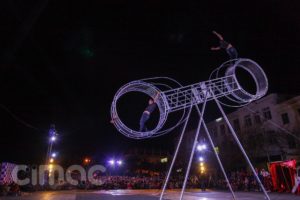 The guests and attendees are able to visualize the great traditional circus culture that exists in Chile, since the traditional circus is an intangible heritage in our country. The contemporary circus has burst into full force in the last thirty years in our country, with many companies in different regions and a great background in social work.
The guests and attendees are able to visualize the great traditional circus culture that exists in Chile, since the traditional circus is an intangible heritage in our country. The contemporary circus has burst into full force in the last thirty years in our country, with many companies in different regions and a great background in social work.
All photos provided by CIMAC.
Con el próximo CIMAC (Congreso Internacional de Malabares y Artes del Circo) en septiembre, el mundo del malabares y el circo en Chile se prepara para una infusión internacional de creadores, incluso mientras se prepara para compartir la naturaleza y el espíritu únicos del circo y los malabares chilenos. Ya en 2004, la contribución de Chile al mundo del malabarismo ha sido bien establecida y fue reconocida por The Washington Post con su artículo They Took Juggling Balls and Run With Them.

Una de las fuerzas detrás de este gran congreso de malabares y circo es Javier Morales, el propio artista de circo (payaso y malabares). Morales es director de la compañía de circo Malabicirco y también director de CIMAC. Su compañía Malabicirco es la compañía de circo contemporáneo más antigua de Valparaíso, Chile, integrada por 10 miembros de base que “aman el circo, las artes escénicas, la independencia y la libertad”. Hablamos con Morales sobre los planes para CIMAC en 2021 y los tipos de adaptaciones que han hecho para asegurar que el evento no solo sobreviva sino que prospere durante la pandemia.
Kim Campbell: ¿Cuál es la misión de CIMAC?
Javier Morales: Producir alegría, asombro y conocimiento en torno al circo para la familia chilena y artistas de América del Sur.
KC: ¿Cuándo y cuánto tiempo durará CIMAC este año?
JM: CIMAC 2021 se realizará del jueves 2 al domingo 12 de septiembre. Este año CIMAC se realizará en gran porcentaje en formato online. Pocas actividades presenciales, pero sin convocatoria de personas, intervenciones en la vía pública como un alambrista cruzando dos grandes edificios para sorpresa de la gente en tránsito y visitando con un camión circense algunos barrios de Valparaíso.
KC: ¿Puedes contarnos algunos artistas confirmados en CIMAC? Estrellas invitadas? ¿Oradores principales?
JM: Este año vamos a tener la participación con una clase magistral de 4 horas de Gandini Juggling. Craig Quat impartirá un seminario de 15 horas sobre malabares funcionales y Bartolomé Silva, fundador del Circo del Mundo Chile (cirque du monde), participará con un seminario de 8 horas de puesta en escena para artistas circenses. Además se realizará el Show de Gala CIMAC con los mejores artistas de circo chileno.
KC: ¿Cuántas ediciones tiene CIMAC?
JM: Esta edición será la duodécima versión, comenzamos con la primera en 2009. Tuvimos una pausa en 2018 debido a algunas huelgas en el edificio en el que celebramos CIMAC. Había una ocupación de algunas personas en ese lugar.
KC: Javier, cuéntanos sobre ti y tu experiencia circense.
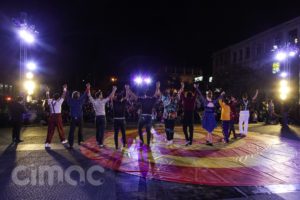 JM: Empecé a disfrutar y entrenar el circo a los 16 años, primero como hobbie. A los 18 años entró a la universidad de Playa Ancha (UPLA) a estudiar Traducción e Interpretación Inglés-Español, durante el transcurso de esa carrera (cinco años) comencé a tomar algunos talleres y seminarios sobre circo y teatro en Chile y Argentina. Mis disciplinas en el circo son el malabarismo y payaso. Luego, en el proceso de enseñar circo a niños y adolescentes, decidí obtener el título de Licenciado en Educación (2012). Y en 2020 tenía planeado viajar a Zaragoza, España, porque obtuve una beca para estudiar un Máster en Espectáculos en vivo, pero debido a la situación de pandemia tuve que realizar el curso modo on line. En 2021 obtuve el grado de Máster en Espectáculos en vivo (Universidad San Jorge, Zaragoza, España). Desde 2007 he sido el director artístico de la Compañía de Circo Malabicirco, que es la Compañía más antigua de la ciudad de Valparaíso. He escrito y dirigido nueve creaciones. Desde 2009 he sido el director general de CIMAC (Congreso Internacional de Malabares y Artes del Circo).
JM: Empecé a disfrutar y entrenar el circo a los 16 años, primero como hobbie. A los 18 años entró a la universidad de Playa Ancha (UPLA) a estudiar Traducción e Interpretación Inglés-Español, durante el transcurso de esa carrera (cinco años) comencé a tomar algunos talleres y seminarios sobre circo y teatro en Chile y Argentina. Mis disciplinas en el circo son el malabarismo y payaso. Luego, en el proceso de enseñar circo a niños y adolescentes, decidí obtener el título de Licenciado en Educación (2012). Y en 2020 tenía planeado viajar a Zaragoza, España, porque obtuve una beca para estudiar un Máster en Espectáculos en vivo, pero debido a la situación de pandemia tuve que realizar el curso modo on line. En 2021 obtuve el grado de Máster en Espectáculos en vivo (Universidad San Jorge, Zaragoza, España). Desde 2007 he sido el director artístico de la Compañía de Circo Malabicirco, que es la Compañía más antigua de la ciudad de Valparaíso. He escrito y dirigido nueve creaciones. Desde 2009 he sido el director general de CIMAC (Congreso Internacional de Malabares y Artes del Circo).
Es una gran cultura, malabares deportivos, malabares callejeros, y malabares escénicos puedes ver en Chile. Tenemos muy buenos malabaristas en nuestro país.
KC: ¿Cuántas personas trabajan en su equipo y planifica CIMAC durante todo el año?
JM: 16 personas componen el equipo principal del CIMAC (áreas de producción, comunicación, audiovisuales y artísticas). Luego, durante las actividades, para este año 2021, casi 70 personas entre artistas, técnicos y otros forman parte del evento.
KC: ¿Recibes apoyo del gobierno y de las empresas locales para organizar el festival?
JM: Durante las 12 versiones del evento hemos recibido apoyo del gobierno tres veces en 2017, 2019 y 2021. En Chile hay que postular al financiamiento y esperar y orar mucho, hahaha. Las empresas locales no se involucran demasiado con eventos artísticos.
KC: ¿Cómo surgió la idea de producir este festival originalmente?
 JM: Esta idea surgió con el objetivo de celebrar el Día Mundial del Malabarismo (en junio). Luego modificamos el título del evento a CIMAC por las características de las actividades y buscamos otra fecha de celebración, porque en junio llueve mucho en Chile, es invierno. A partir de 2019 empezamos a celebrarlo en agosto. Durante el proceso del evento (2009-2021) buscamos momentos para el circo con el fin de discutir sobre disciplinas, enseñanza, aprendizaje, exhibición y creación.
JM: Esta idea surgió con el objetivo de celebrar el Día Mundial del Malabarismo (en junio). Luego modificamos el título del evento a CIMAC por las características de las actividades y buscamos otra fecha de celebración, porque en junio llueve mucho en Chile, es invierno. A partir de 2019 empezamos a celebrarlo en agosto. Durante el proceso del evento (2009-2021) buscamos momentos para el circo con el fin de discutir sobre disciplinas, enseñanza, aprendizaje, exhibición y creación.
KC: ¿Qué importancia tiene el malabarismo en Chile?
JM: El malabarismo es la disciplina masiva del circo en Chile, el elemento más inmediato que tienes para aprender es el malabarismo. Es una gran cultura, malabares deportivos, malabares callejeros, y malabares escénicos puedes ver en Chile. Tenemos muy buenos malabaristas en nuestro país.
KC: ¿Qué tipo de espectáculos habrá en esta edición?
JM: La Gala CIMAC estará representada por artistas del circo tradicional y contemporáneo, de diferentes disciplinas como malabares, monociclos, equilibrio sobre esfera, trapecios, acróbatas y otros.
Luego se presentará Eureka que es un espectáculo creado en colaboración de Malabicirco (Circo contemporáneo) y Golden Circus (Circo tradicional). Rutinas clásicas de payaso, hoy desaparecidas, dispuestas a la dramaturgia del espectáculo.
Vamos a tener dos vehículos que irán a los barrios de la ciudad. El primero es el camión del circo llamado Circo a tu Ventana y el segundo es Comando RIE que es dirigido por Tuga, un reconocido mimo chileno.
En la vía pública estará presentando la actuación de Crossing Lives. Un hombre en un cable cruzará de un edificio a otro. 20 metros de altura serán la prueba para este acto circense realmente arriesgado.
KC: ¿Notas alguna tendencia circense emergente en Chile y afectan el tono y contenido de tus eventos?
JM: Contemporánea y tradicional son las tendencias que lideran el proceso circense en Chile. Somos el único evento en Chile que invita a estas dos líneas de circo a participar en CIMAC, y la experiencia de tenerlos todos juntos ha sido absolutamente grandiosa, solo resultados positivos.
La impresión general es muy buena, ya que el evento con características de congreso tiene un alto enfoque pedagógico, no solo para artistas circenses sino también para niños y familias no circenses.
KC: ¿Qué tipo de talleres habrá este año y para quién son?
JM: Contamos con tres seminarios para artistas de circo profesional, Puesta en Escena Para Artistas de Circo (Barrtolome Silva), Malabarismo Funcional (Craig Quat) y Malabarismo y Movimiento (Gandini Juggling).
Contamos con cinco talleres para público familiar; Bufonadas y Payaso (Malabicirco), Magia (Samyr Dorado), Malabares (Alvaro Palominos), Burbujas (Dirck Pajares), y Marionetas (Lorena Carvajal). Además vamos a tener un taller de primeros auxilios para artistas y público en general.
KC: Personas de todo el mundo asisten al evento, ¿se van con una mejor comprensión de la importancia del circo en Chile?
JM: Personas de diferentes países vienen a participar en las actividades de CIMAC. La impresión general es muy buena, ya que el evento con características de congreso tiene un alto enfoque pedagógico, no solo para artistas circenses sino también para niños y familias no circenses. Se generan conversaciones, charlas y conferencias que también acercan el circo al mundo académico. De esta forma, los temas tratados son muy variados y de interés general. Los artistas extranjeros se sorprenden con el nivel de producción del evento, y obviamente este cruce entre artistas circenses tradicionales y contemporáneos les llama la atención.
 Los invitados y asistentes pueden visualizar la gran cultura circense tradicional que existe en Chile, ya que el circo tradicional es patrimonio intangible en nuestro país. El circo contemporáneo ha irrumpido con fuerza en los últimos treinta años en nuestro país, con muchas compañías en diferentes regiones y un gran trabajo social.
Los invitados y asistentes pueden visualizar la gran cultura circense tradicional que existe en Chile, ya que el circo tradicional es patrimonio intangible en nuestro país. El circo contemporáneo ha irrumpido con fuerza en los últimos treinta años en nuestro país, con muchas compañías en diferentes regiones y un gran trabajo social.
Todas las imagenes cortesía de CIMAC.
Editor's Note: At StageLync, an international platform for the performing arts, we celebrate the diversity of our writers' backgrounds. We recognize and support their choice to use either American or British English in their articles, respecting their individual preferences and origins. This policy allows us to embrace a wide range of linguistic expressions, enriching our content and reflecting the global nature of our community.
🎧 Join us on the StageLync Podcast for inspiring stories from the world of performing arts! Tune in to hear from the creative minds who bring magic to life, both onstage and behind the scenes. 🎙️ 👉 Listen now!
